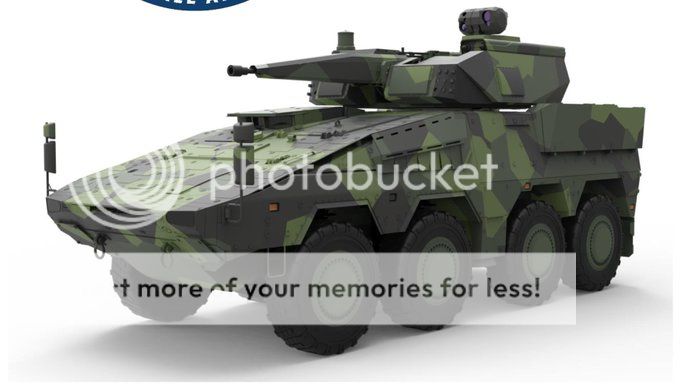Post 1 of 2: Debunking Artillery & Industrial Base Falsehoods
Hell the world and his oyster could be delivered by then.
whereas the G _6 Rhino of SPH of which only 150 ever built would currently obliterate the K9 and pZH 2000 till about 2030...
The K9 with its auto loading side kick which will double its weight , length and cost is just not feasible and laughable.
This from a country supposedly an ally, yet maligned by institutions and countries it helped save countless lives with its IP, mainly through its MRAP technology is sickening.
1.
@Bradbad, in the 1st Gulf War, it was demonstrated by the Americans that the era of howitzer vs howitzer battles is over. For the US led coalition, a total, 43 artillery battalions (with 296 howitzers) and 7 MLRS battalions were available to support 53 maneuver battalions (19 tank, 16 mechanized infantry, and 18 infantry). The VII Corps deployed in Nov 1990, and became the main effort for the planned ground offensive. The VII Corps received 4 field artillery brigades to support operations, with a mixture of 155mm and 203mm howitzers, and MLRS.
(a) Saddam’s 200 GHN-45 155mm artillery guns may have been formidable on paper but they still lost the counter-battery fight. The effectiveness of joint fires depends not only on the precision of the guns, but also on the quality of intelligence.
(b) In Operation Desert Storm coalition forces rarely came under accurate or sustained fires. When they did, the point of origin was usually acquired quickly and neutralized by one of many available fire support systems within striking distance. Throughout Operation Desert Storm, the Iraqis had demonstrated an inability to adjust or integrate fires, negating any advantages they held in range or quantities of artillery.
(c) Modern counter-battery work is a battle of the
OODA loop of the DSC that provide responsive C4ISR and weapon location to its artillery brigade and air force (and artillery may not be the force of choice to attack enemy SPHs on the move). To put it more simply, to shorten the sensor shooter cycle. Therefore, detection of enemy using sensors and recce forces (like UAVs, LRRPs, forward air controllers and forward observers), that fan out and relay information to the Division Strike Centre (DSC) is the way forward for Australia or Singapore.
(d) From 10 to 27 May 2008, the South African National Defence Force saw first hand Singapore’s DSC at work in Lohatla — as a Singaporean, I am grateful to South Africa for allowing the SAF to continue to train there and learn from their army.
Not '98 or 2000's here. I am sure there may other systems that could be built catering to countries needs. Like a C-RAM system, longer-range going forward. in terms of artillery and vehicle. Reducing crew components from 3 to 2 etc. Denel and all its iterations are State-sponsored, therefore give them an order and see if they can deliver!
(e) Due to years of under-investment, Denel and South Africa’s defence industry has lost some capability; and it is not realistic to ask them to suddenly deliver competitive weapon systems in the manner you expect.
- The market for C-RAM system, for example, is saturated; Denel Dynamics’ Cheetah C-RAM system at technology readiness level TRL 4, is interesting but non operational idea for demanding users (i.e. not technologically mature for use outside of an experimental setting), as it is targeted for use in future UN peacekeeping missions. More importantly, Cheetah in certain missions, is inferior to Saab’s Ground-Based Air Defence (GBAD) and C-RAM solutions used by the ADF — namely, the Giraffe AMB radar and RBS 70 combo.
- When matured to technology readiness level TRL 7, in the late 2020s, Cheetah at that time may meet the UN or South African National Defence Force’s future needs but not the current war fighting needs of the SAF, who bought the ELM-2311 weapon locating radar, to replace Singapore’s older Swedish ARTHUR radar (that was deployed to Afghanistan).
- The SAF is demanding because of its high end needs. Mounted on a Bronco for tracked mobility, the ELM-2311 weapon locating radar needs to out range, target and hunt the enemy’s Swedish ARTHUR radar weapon locating radars.
(f) Singapore does buy the design of the
Marauder MRAP from South Africa (rebranded as Belrex) but not the higher end stuff that requires high levels of automation or lots of programming. For MRAPs, Singapore uses South African IP to develop the 10 variants of the Belrex Protected Vehicle (which we have the right to resell anywhere). In particular, the Belrex SRAMs 120mm mortar carrier has export potential (as it replaces all towed mortar in the SAF).
2. We know that South Africa with an annual defence budget of US$4.28 billion has not invested as much as Singapore or Australia in their DSC; if a South African G6 fires a round at a capable army (with a DSC like that of Singapore or Australia), you can count the minutes before it is hunted down, even on the move, and destroyed.
3. The key roles of the DSC are, as follows:
(a) Strike Orchestration. DSC conducts strike operations against targets such as artillery platforms, Multiple Rocket Systems (MRS) and GBAD, to shape the battlefield by reducing threats to our land and air assets.
(b) Counter-Fire Capability. Weapon Locating Radars (WLRs) may be deployed to accurately locate artillery projectiles and rockets within seconds. Upon detection, DSC orders counter-fires which are immediately processed and transmitted directly to pre-determined shooter platforms. The entire process, from detection to firing the first shot can be effected within minutes.
(c) Synchronisation with Air and Naval Fires. Besides co-ordinating fire for the Army, the DSC also synchronises with shooters from the Air Force and Navy so as to deliver a more lethal kill.

